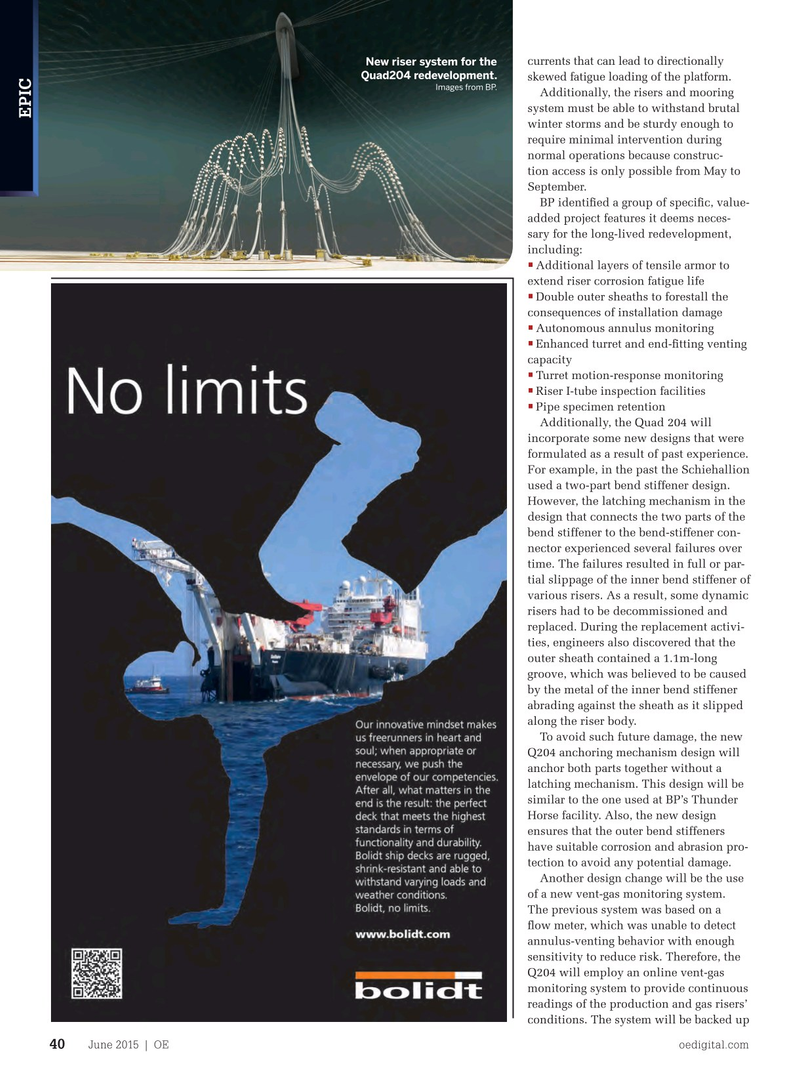
Page 38: of Offshore Engineer Magazine (Jun/Jul 2015)
Read this page in Pdf, Flash or Html5 edition of Jun/Jul 2015 Offshore Engineer Magazine
currents that can lead to directionally
New riser system for the
Quad204 redevelopment. skewed fatigue loading of the platform.
Images from BP.
Additionally, the risers and mooring system must be able to withstand brutal
EPIC winter storms and be sturdy enough to require minimal intervention during normal operations because construc- tion access is only possible from May to
September.
BP identifed a group of specifc, value- added project features it deems neces- sary for the long-lived redevelopment, including: •
Additional layers of tensile armor to extend riser corrosion fatigue life
Double outer sheaths to forestall the • consequences of installation damage
Autonomous annulus monitoring •
Enhanced turret and end-ftting venting • capacity
Turret motion-response monitoring •
Riser I-tube inspection facilities •
Pipe specimen retention •
Additionally, the Quad 204 will incorporate some new designs that were formulated as a result of past experience.
For example, in the past the Schiehallion used a two-part bend stiffener design.
However, the latching mechanism in the design that connects the two parts of the bend stiffener to the bend-stiffener con- nector experienced several failures over time. The failures resulted in full or par- tial slippage of the inner bend stiffener of various risers. As a result, some dynamic risers had to be decommissioned and replaced. During the replacement activi- ties, engineers also discovered that the outer sheath contained a 1.1m-long groove, which was believed to be caused by the metal of the inner bend stiffener abrading against the sheath as it slipped along the riser body.
To avoid such future damage, the new
Q204 anchoring mechanism design will anchor both parts together without a latching mechanism. This design will be similar to the one used at BP’s Thunder
Horse facility. Also, the new design ensures that the outer bend stiffeners have suitable corrosion and abrasion pro- tection to avoid any potential damage.
Another design change will be the use of a new vent-gas monitoring system.
The previous system was based on a fow meter, which was unable to detect annulus-venting behavior with enough sensitivity to reduce risk. Therefore, the
Q204 will employ an online vent-gas monitoring system to provide continuous readings of the production and gas risers’ conditions. The system will be backed up
June 2015 | OE oedigital.com 40 038_OE0615_EPIC1_Jeannie.indd 40 6/1/15 11:20 AM

 37
37

 39
39